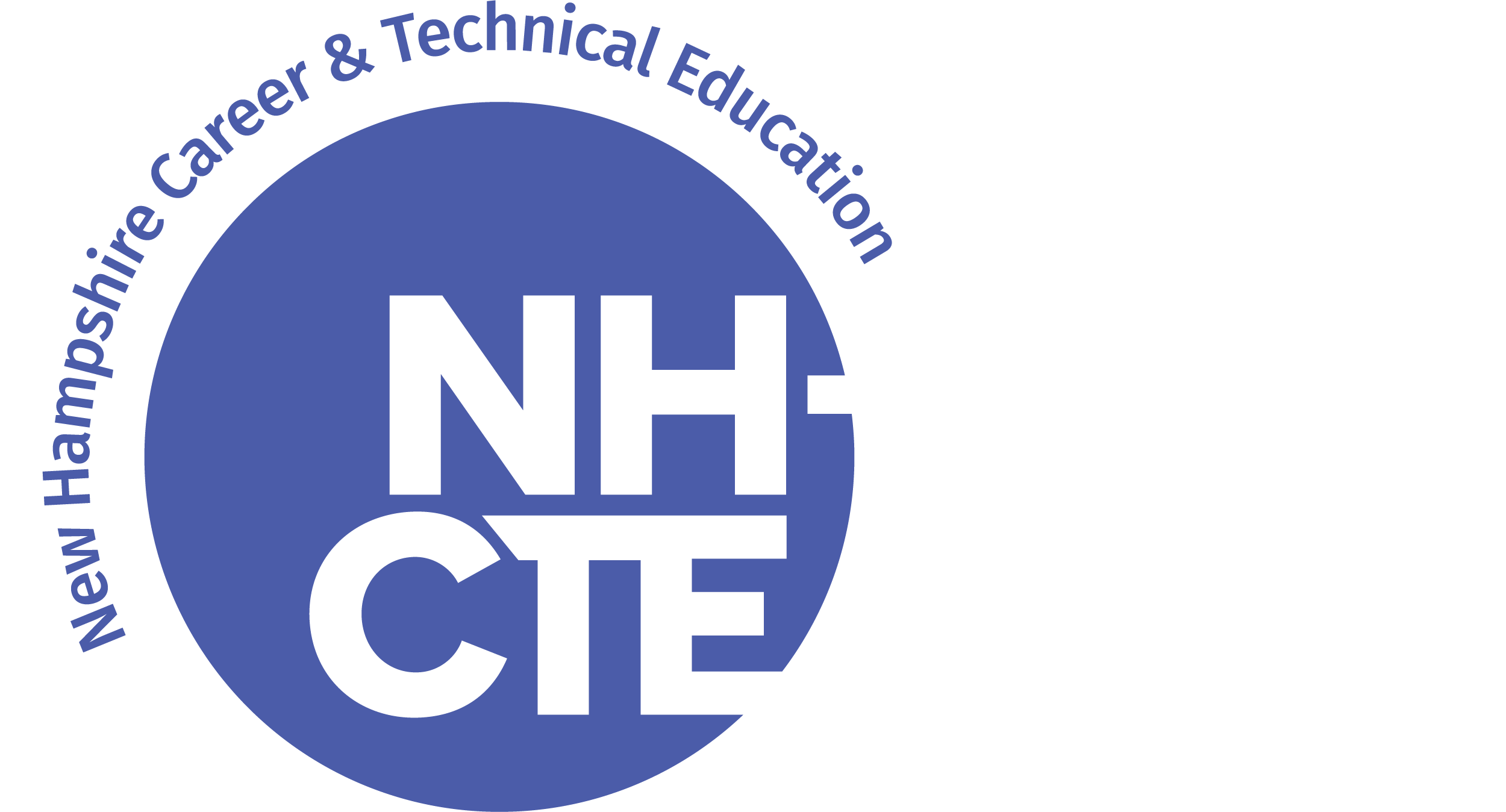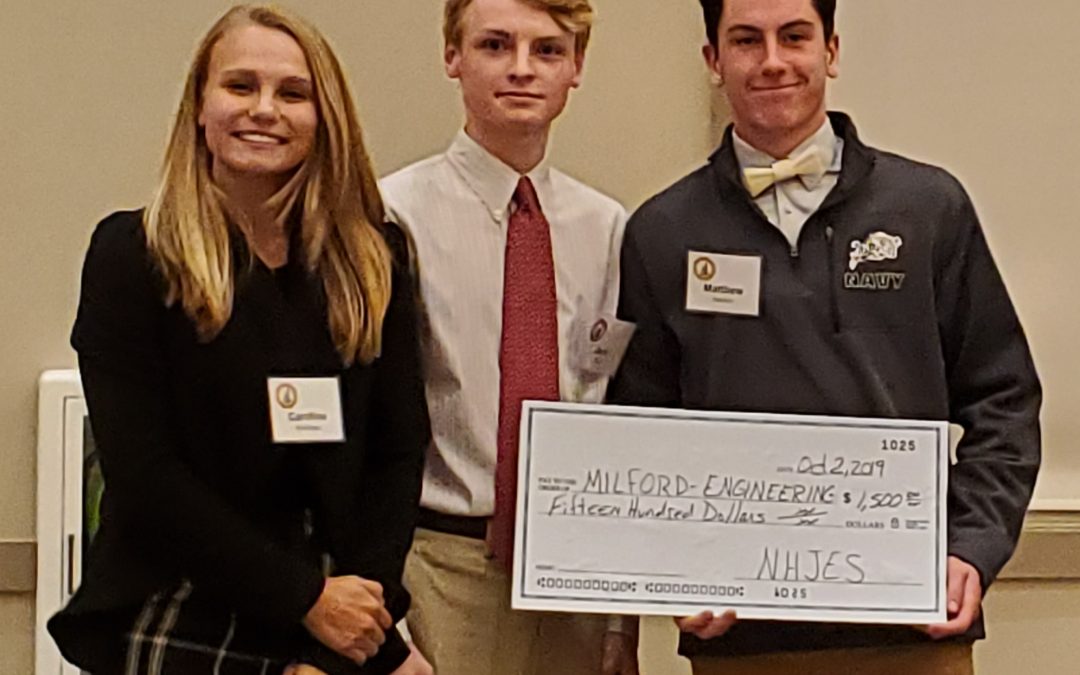
Oct 18, 2019 | Article, Impact, Programs
On October 2, the New Hampshire Joint Engineering Societies (NHJES) held its 13th Annual Conference, highlighted by a live demonstration from students from St. Thomas Aquinas in Derry.
“They were able to demonstrate the skill of the VEX IQ robot picking up cylinders in an agility style movement,” said NHEJS Board Member Frank Xydias, who teaches at Milford High School & Applied Technology Center. “It was great.”
Representing the third year running in which the conference included secondary teachers and students, this year’s conference featured several other presentations.
Students from Manchester Community College’s Workforce Development Summer STEM Camps showcased their 3D printing and robotics skills. In addition, Milford High School & Applied Technology Center’s Engineering and Career Focus Internship students discussed their programs.
“The conference provides an opportunity for students to connect with professional engineers from across the state,” added Xydias. “It’s a chance to learn about career pathways, career planning and network as a junior engineer.”
NHJES Chair Michale Bogue commented on the skills and preparation demonstrated by these students.
“Our society has expressed a desire to stay true to our mission, which is to provide education, leadership, and support,” he said.
“We do this for both our adult members and our future members, the students in attendance, added Xydias.
Members in NHEJS include New Hampshire Society of Professional Engineers, American Council of Engineering Companies, American Society of Civil Engineers – NH Section, IEEE – New Hampshire Section, Society of Women Engineers, Southern New Hampshire, and Structural Engineers of New Hampshire.
At this year’s conference, Keynote Speaker Dr. Cist, Vice President of R&D for Geophysical Survey Systems in Nashua, told stories of applications of ground penetrating radar systems.
“While it is a subject that sounds like it would only apply to engineers in the field, his illustrations and stories captivated us all,” recounted Xydias. “He also challenged all the students in the audience to follow their passion for engineering, because it is a career that does a lot of good.”
It is also a career with “tremendous diversity,” as he said there are more than 40 types of engineering degrees and a number of subcategory professions,” he said.
“An engineering career can lead to many other professions,” he added. “It is not exactly what people think, which is why this conference is important, because it helps to paint that broader picture.”
As for the future of engineering, Xydias said it is unknown to a certain extent, which makes the field so intriguing.
acknowledged he is not sure, which he said makes the engineering field so interesting.
“The careers that students will be going into in 10 years have not even been developed yet,” he said. The future is wide open, and engineering is going to be behind many of the advances that shape how we live.”
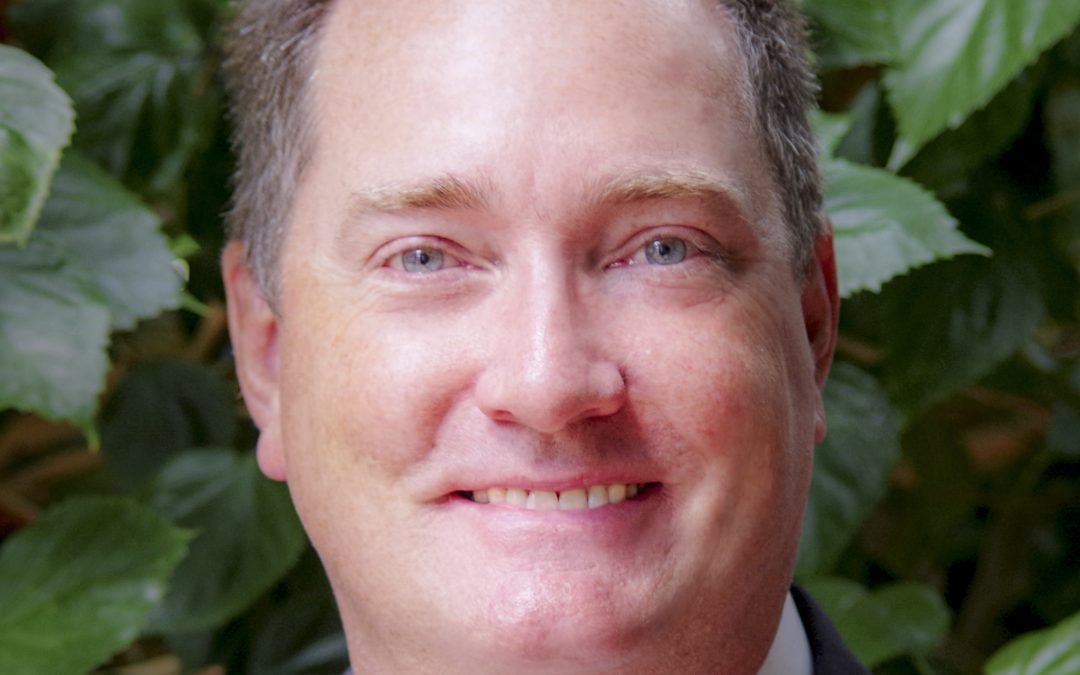
Sep 17, 2019 | Impact, Leadership
Recently, David Ryan, Superintendent of School at SAU 16, spoke about the importance of helping build pathways to careers for students at Seacoast School of Technology, a topic he feels should receive more attention.
“The current state of education includes multiple pathways for students that don’t resemble traditional schooling of years’ past,” he said. “We have more K-12 students learning in community settings, colleges and universities, internships, independent studies, and extended learning opportunities.”
These opportunities, he said, stand in stark contrast to prior educational models in which students “were required to sit for a definitive number of hours in a classroom chair and learn only in the schoolhouse.”
“The roll-out of competency-based education as a regulatory requirement in 2005 was groundbreaking in terms of requiring it in all schools,” he said.
Ryan said the concepts behind competency-based education have been alive and well for years in career preparation models, such as CTE and corporate-sponsored training programs. These models, he noted, underscore a very important shift that has begun and will continue to take place in education.
“We have begun to talk seriously about training students to be thinkers and leaders as opposed to rote memorization of facts and redundancy of skills,” he said. “Students need to be able to assimilate and adapt to the changing labor market.”
The concept of “career pathways” is not mere ,either.
“Science and technology move too rapidly to single out one specific career path,” he said. “Building a fundamental skillset on the basics of science and technology and then applying those basics to increasingly complex experiences that promote inquiry, prototyping, and discovery will be the new way to learn.”
He said this new way to learn rests on partnerships between schools and industry.
“We need our community partners and business leaders to begin providing those experiences and guidance now,” said Ryan, who said the economic lever of every community is its school system.
“In New Hampshire, real estate values rise and fall depending upon the quality of the education people believe their children receive,” he said. “The quality of the education can depend quite heavily on the financial support it receives from the town.”
He said that employers seeking quality job candidates, particularly those with young families, find it much easier “to recruit and hire the very best” when they are able to demonstrate the strength of the schools.
“A high quality school traditionally attracts families who value education, making it easier for businesses to not only stock their rosters but thrive in retail settings,” he added.
Noting schools are “preparing the employees of tomorrow,” Ryan said it is critical businesses and schools work together to complement an educational program that includes adaptability to changing markets and accessibility to good paying jobs.
“This is essential if communities are going to sustain their quality and growth by keeping our graduates here,” he said.
Presently, Ryan said this is an issue that is not receiving the proper attention it deserves.
“Thankfully organizations like NH Coalition of Business and Education, Stay Work Play NH, and the Governor’s Task Force for the Recruitment and Retention of a Young Work Force for NH are addressing it with gusto,” he said.
As for steps he is taking in his own district, Ryan said they are expanding their Extended Learning Opportunity (ELO) program to include a full time coordinator.
“We want to better serve the individual needs of students who are seeking such opportunities as well as expand and introduce them to the meaningful and rich experiences from among a more broad array of organizations,” he said.
He said that part of this process will include guiding students through some form of personal reflection to help them understand self-knowledge and the impact that has on their outlook to the future.
“ELOs can do this, but we also want to enhance our internships that currently exist with our current business partners by introducing cooperative education experiences that involve full-time employment that carries academic credit,” said Ryan.
He said their goal in SAU 16 is to create more opportunities for students to discover their passion and then create a supported path of exploration.
“We believe this will allow our students to really focus more on what they want to do after graduating from high school and be better prepared to do it successfully,” he said.
To learn more about SAU 16, visit sau16.org.
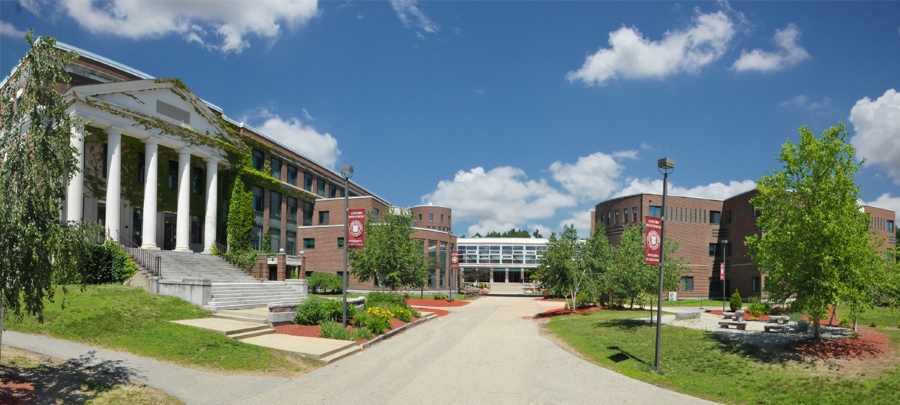
Aug 9, 2019 | Impact, Teachers
While English is often viewed as a stand-alone academic subject, Beth York, English teacher and reading specialist at Concord High School, said it is time to rethink that paradigm.
“Most people in the working world will be using their literacy to persuade, inform, instruct, remedy, or collaborate in order to achieve a goal,” she said.
Citing many high school English teachers as “very good” at teaching persuasive, informative and narrative writing and speaking as well as careful, analytic reading of great literature, York said she and other Concord English teachers have been trying a new approach.
“Through Career Communications class, we are striving to place student literacy instruction into contexts they will one day encounter in the workplace,” she said.
While students typically associate English class with novels, films and poetry, York said the reality is that they will spend their days in the workplace leading meetings, engaging with customers, or drafting content for stakeholders.
“They will use their literacy skills to ask for raises or promotions and to direct their professional lives,” said York. “The classroom and workplace experiences should not be so distinct.”
She said great novels, poems, films and essays still have their place, however, as she noted they make us better thinkers and human beings.
“Reading rich, honest storytelling makes us more empathetic and enables us to engage more fully with the world and with each other,” she said. “We need to keep these inspirational aspects of literacy instruction while adding the more aspirational ones.”
These aspirations aspects will assist students in learning how to persuade or negotiate in the workplace using audience awareness and sound reasoning.
“Once in the workplace, they won’t often write five paragraph essays, but they will need to understand how to adjust the structure, tone and content or their writing to effectively reach particular audiences for particular purposes,” she said.
With these ideas in mind, York said Steve Rothenberg, Concord High School’s CRTC Director asked her to collaborate with him and other English teachers to design and launch Career Communications.
“I immediately signed on,” she recounted.
Designed with an optional ½ credit Extended Learning Opportunity (ELO), the course is comprised of classroom time learning, practicing and demonstrating English skills, research and a project in the field or outside of class.
“In this class, I hope to help students develop literacy skills and habits that can support their future workplace success,” said York.
Success in the course is defined across 5 core competencies.
Competencies:
- Reading: Students will demonstrate the ability to comprehend, analyze, and critique a variety of increasingly complex print and non-print informational texts.
- Writing: Students will demonstrate the ability to write different texts for different purposes, including reasoned arguments backed by evidence, informative texts conveying complex ideas, and narratives.
- Research: Students will demonstrate the ability to locate, compile, organize, analyze, integrate and present topical information.
- Speaking, listening and viewing: Students will demonstrate the ability to listen and view critically and to speak purposefully and effectively for a variety of purposes.
- Technology: Students will demonstrate the ability to use multiple forms of technology, including digital media and the Internet, to access, evaluate, organize and communicate information.
The goal of the course, noted York, is “to enable students to positively impact their future workplace and to further their own career through the skillful application of effective reading, writing and interpersonal communication strategies.”
To prepare to teach the course, she said she spent time interviewing industry professionals in fields relevant to her CRTC students’ programs, listening to CRTC colleagues and reading everything relevant [she] could get [her] hands on.”
“I interviewed several industry professionals, including the Director of Human Resources from Concord Hospital, a local fire captain, the service manager of a large auto dealership, a police detective, the president of a large construction firm, two salon owners and others.
“I wanted to learn about the literacy skills they use daily, the materials they read to stay up-to-date in their fields, and the skills and qualities they look for in new hires,” she said. “These conversations and experiences helped me to create a framework for teaching this course.”
Through this research, she said she was able to recognize universal skills common to each workplace.
“In all career fields, we will need to inform and persuade,” she said, “and there are universal strategies for doing so effectively and in a manner that will generate return customers or support collegial relationships.”
York also found several skills unique to each workplace.
“The audience and context within which a police officer or EMT works is different from that of a graphic designer or chef,” she explained. “Students need to practice applying skills flexibly with consideration of the contexts and audiences they will likely encounter in the field.”
For York, the course underscores something that should be fundamentally understood in today’s education model.
“I believe that our ability to read, write and speak effectively serves as our bridge to the wider world,” she said. “It is how we how we come to understand, engage with and sometimes shape our society.”
In part two of this two-part series, we look more closely at Career Communications at CRTC.
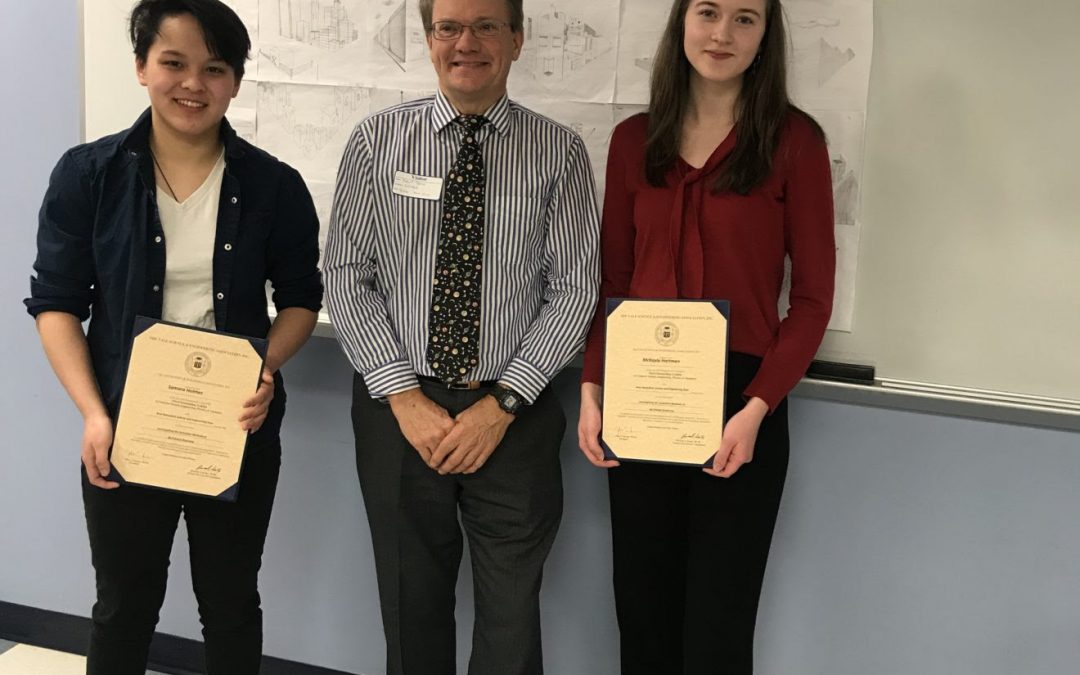
Apr 16, 2019 | Impact, Students
Students on the right “career path” in CTE
While Career and Technical Education (CTE) has garnered more attention in recent years, much is still misunderstood about it.
“CTE is not a lower level of education,” said Samara Holmes, current student at Seacoast School of Technology (SST). “Technical schools and entering ‘the trades’ have a bad reputation that shouldn’t be looked down upon.”
According to Holmes, SST has provided her and other students with the ability to earn college credit, and practice the real world application of learned skills.
“These are opportunities that wouldn’t be given to any other regular high schooler,” she added.
Fellow SST student McKayla Hartman agrees and cited several examples, one of which includes taking the Autodesk Inventor Certification Test in May, which she said will give her “a head-start to achieving [her] career goals.”
A current sophomore at Newmarket High School and in her second year of SST’s Pre-Engineering program, Hartman already has her sights set high. For her, the sky may not even be the limit.
“My main interest is exploring a career as a flight engineer and eventually working for NASA in the aerospace department,” she said. “I hope to maybe even become an astronaut and explore extraterrestrial life on other planets.”
She cited her enrollment in SST’s Pre-Engineering program as an important step toward that goal.
“I have been able to explore multiple engineering disciplines and discover my love and dedication to aerospace engineering,” she said. “I have been introduced to people who have similar aspirations as me, which have, in turn, allowed me to form many wonderful friendships, too.”
Holmes, a junior at Exeter High School who is currently in SST’s Computer Science program after finishing the Pre-Engineering course last year, cited a similar experience.
“SST helped me discover what career path I should follow,” she said.
Noting she has always been interested in “computing and creating,” Holmes acknowledged she was not sure if such interests could necessarily translate into a career.
“When I entered the engineering program freshman year, I was able to learn more about the types of engineering fields I could enter,” she said. “It helped me narrow down what I wanted to do.”
Hartman and Holmes not only share similar interests, they had the chance to work together this year on a project that garnered several accolades.
At the New Hampshire Science and Engineering Exposition on March 21, the students earned the Yale Science and Engineering Award and a $2,000 scholarship each to the New Hampshire Academy of Science.
For their teacher Vaso Partinoudi, the recognition was well-deserved given that the project focused on 4D printing and the fourth dimension, which refers to transformation over time or through a change in conditions.
“As soon as I looked at the poster Samara and McKayla created for this project, I knew they were going to place [at the exposition] – it was college level,” she said. “No one has heard of 4D printing, which is also how I knew they’d place. The judges were looking for the unexpected.”
As for the specifics, the project entailed submerging a 3D printed object into hot water to see if it would transform into another shape without human intervention. Hartman and Holmes also looked at how layering different materials on top of one other would be affected by the hot water.
The method for altering these structures can have real-world applications in the fields of engineering, robotics, medical, aerospace and others.
“We’re proud of the work we did,” Hartman said. “When we learned we got the special award from Yale, we started jumping up and down.”
“It’s pretty cool because we didn’t really expect that we’d win,” added Holmes.
On March 30, Holmes and Hartman secured additional recognition, as they both received awards in the Aspirations in Computing ceremony from the National Center for Women in Technology.
Expressing excitement at the recognition both students have received in recent weeks, Partinoudi said the real takeaway is how CTE helps inspire students to broaden their horizons.
“Winning the awards was the icing on the cake,” she said.
Accolades aside, Holmes said she is excited for her future and said her ability to direct herself is a skill she directly attributes to her CTE experience.
“Being able to know what you need to do, what you want to do, and combining those to achieve those goals is a skill that I will use in any aspect of my life,” she said. “High school has definitely been where I have achieved most of my goals because of self direction. I would not be as independent and prepared for life as I am right now without SST.”

Nov 19, 2018 | Impact, Leadership
Recently, Steve Rothenberg, NHCTA/NH-CTE President, joined a diverse group of leaders from across the nation in California to discuss ways to better advance the skilled trades in the automotive, construction, manufacturing, welding and HVAC sectors.
The trip was sponsored by Harbor Freight Tools for Schools, whose guiding principle is grounded in a deep respect for the skilled trades and desire to create real opportunity for kids who love to build, fix and create. Harbor Freight Tools for Schools is a philanthropic programs of The Smidt Foundation, founded by Eric Smidt, owner of Harbor Freight Tools.
“Harbor Freight Tools for Schools brought us in to advise them on their funding priorities,” said Rothenberg.
Noting there were some “highlight influential people” in attendance, including several state commissioners of education, United Way worldwide executives, LA public transportation system architects, CTE professionals and others, Rothenberg expressed enthusiasm for their collective recommendations.
“The group felt that a pipeline for skilled trade teachers and overcoming the ‘stigma’ of the trades are the two top issues for the foundation to address moving forward,” he said. “It was a very well organized event, and I was pleased to be able to represent the interests of NH and CTE.”
In addition to receiving recommendations from the group regarding funding priorities, Harbor Freight Tools for Schools sought advice on the merits behind getting involved in policy work at the federal, state, local and/or grassroots levels.
According to Rothenberg, Harbor Freight Tools for Schools has already become deeply involved in CTE, as he noted their first foray in this arena was last year.
“They awarded $500,000 worth of prize money to ten top CTE trade teachers in 2017,” he said. “Teachers actually received $10 to $30K directly, while their programs got the rest. This year, the total was raised to $1 million…The application process has some interesting reflective elements that I think could be used for professional development.”
In reflecting on his experience at the national conference, Rothenberg said he cannot help but look ahead at other issues that could be pursued by NH-CTE. These issues, he said, cover broad areas, some of which include:
How to
- Overcome some age limits for trade-based pre-apprenticeships.
- Connect employment security, postsecondary and secondary databases to test the impact of interventions/learning, such as CTE completion.
- Establish career-related competencies for school counselors.
- Establish career credential recognition model for high school graduates.
- Create CTE teacher-leader pipelines to enhance succession planning.
- Refine and further establish ESSA career-related metrics.
- Establish statewide WBL models.
- Advocate for years of service credit for industry experience on the teacher scale for new CTE teachers.
“There is a lot for us to think about in NH and nationwide when it comes to CTE,” he added. “The conference got me thinking about an even bigger picture and the possibilities that could exist through Harbor Freight Tools for Schools.”
To learn more about Harbor Freight Tools for Schools, visit https://harborfreighttoolsforschools.org.
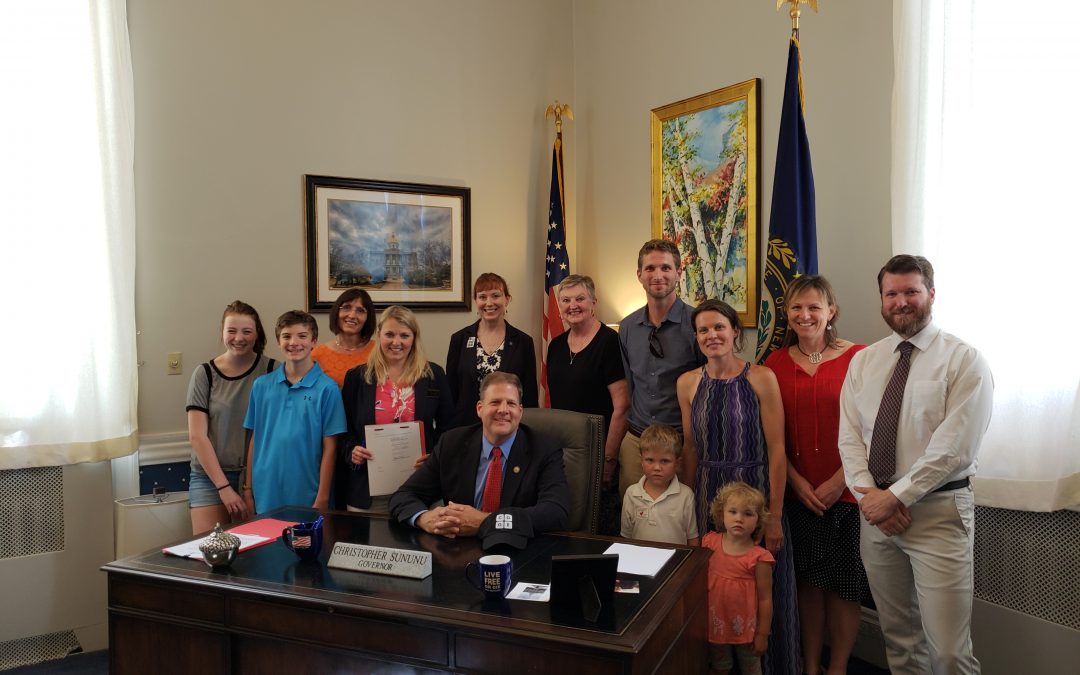
Nov 8, 2018 | College, Impact, Industry, Programs
With the majority of STEM jobs in computing and a projected job growth of 13% compared with 6.5% growth across all occupations, the need for computer science education has never been greater.
It is this need that in part led Creative Computing Challenge (CCC), a five-year program funded by the National Science Foundation, to establish CS4NH. A working group of business/industry, non-profits, and K-12/higher education members collaborating to bring computer science to all New Hampshire K-12 students, CS4NH is working to increase access to and participation in Computer Science educational opportunities.
CS4NH’s Terry Wolf, a NH state legislative representative and vice chair of the House Education Committee, cited “a huge shift” in the public’s understanding of the need for computer science education.
“Not too long ago, people thought Computer Science only needed to be offered at the high school level as an elective,” she explained. “Today, people want kids to be more than consumers of technology. They want them to be the creators, innovators and problem solvers.”
She said this shift in understanding, furthered by advocacy efforts by CS4NH, led to the passage of NH House Bill 1674 earlier this year, which made Computer Science as a core K-12 subject area.
“After listening to a wide variety of stakeholders, adding Computer Science to the definition of an adequate education matched what people are looking for,” she said. “The bill passed with wide bipartisan support in the legislature.”
CS4NH’s Beth Doiron, Director of College Access and DOE programs and initiatives at the community college system of NH, said skills learned in computer science courses help students build basic problem-solving skills.
“Computer science instruction helps students understand how to accomplish tasks more efficiently and help them be better prepared for college in general, regardless of their career or program major choice,” she said.
CS4NH has forged several strategic partnerships, including one with the New Hampshire Tech Alliance, which Executive Director Matt Cookson said makes sense for them in several ways.
“CS4NH goals align perfectly with the goals of our Workforce Development committee and mission of the organization,” he said. “Being able to house the efforts of CS4NH and support its growth and implementation was a logical step as we look to encourage more young people to learn about Computer Science in New Hampshire.”
Judith Burrows, Director of Student Aid at the New Hampshire Charitable Foundation, another CS4NH collaborator, said her biggest takeaway from computer science is the thought processes such a curriculum seeks to encourage.
“Computational thinking is much more than just programming or IT,” she said. “It is foundational for all businesses. It really is the currency that businesses are looking for regardless of the field.”
Citing computational thinking as “the backbone” of various forms of technology, Lori Langlois, Director, North Country Education Services, said Computer Science addresses current and future needs.
“Given the known workforce shortages in NH in computer programming, web development, and other skilled computing fields, CS4NH has an important role in advocating to increase access and participation in CS to foster these career paths for students,” she said.
Langlois said CS4NH is particularly important in her region.
“For the North Country, computer science holds the potential for developing an
innovation economy,” she said. “In order to attract new or expanding businesses, northern NH schools are focusing on computer science with the intention of making visible, the young, energetic, and talented individuals we are developing for a STEM-skilled employee pipeline.”
To learn more about CS4NH, or any related initiative, visit cs4nh.org.
This is the final story of a multi-part series on CCC and the relevance of computational thinking in the classroom and industry in NH.

